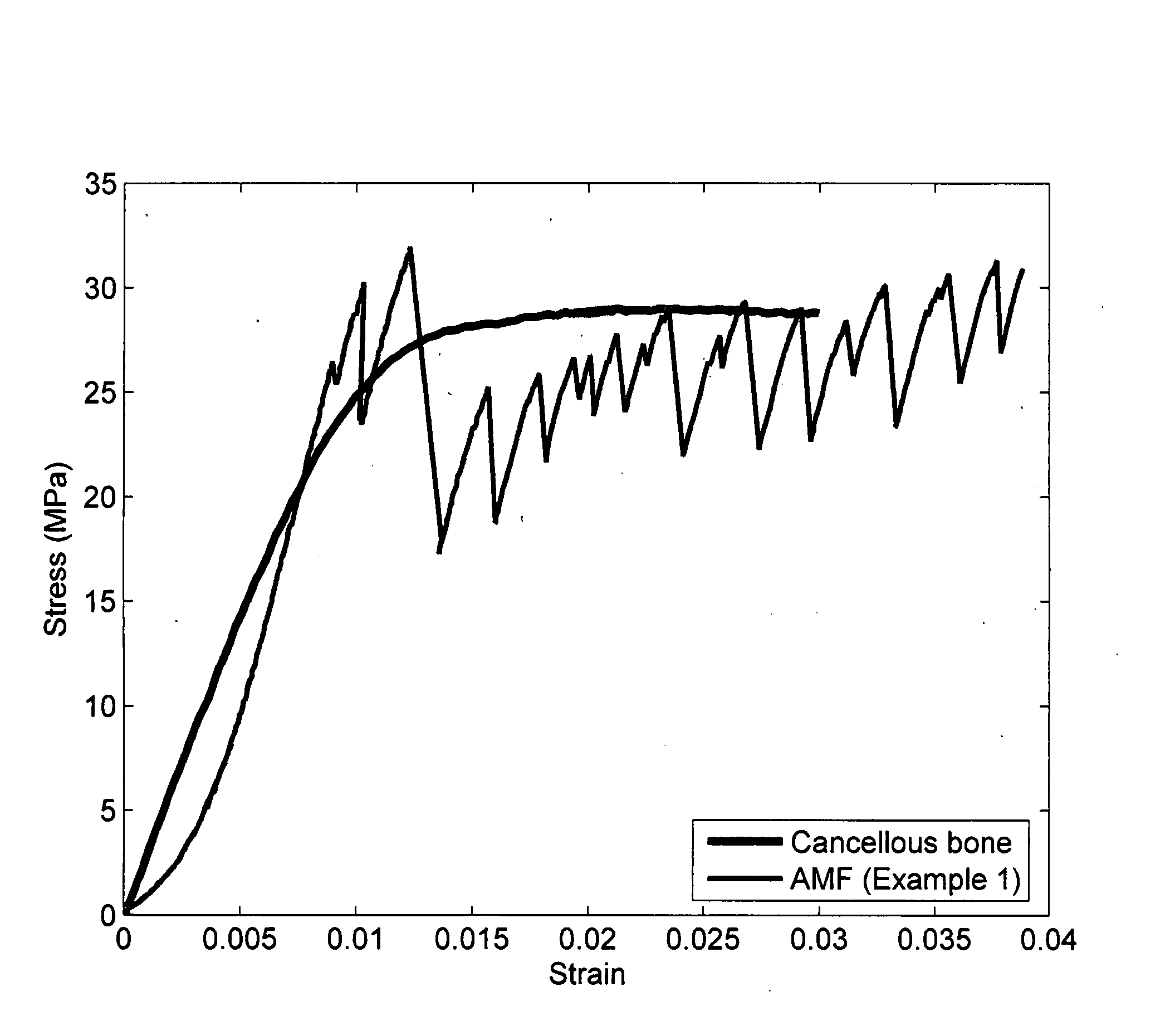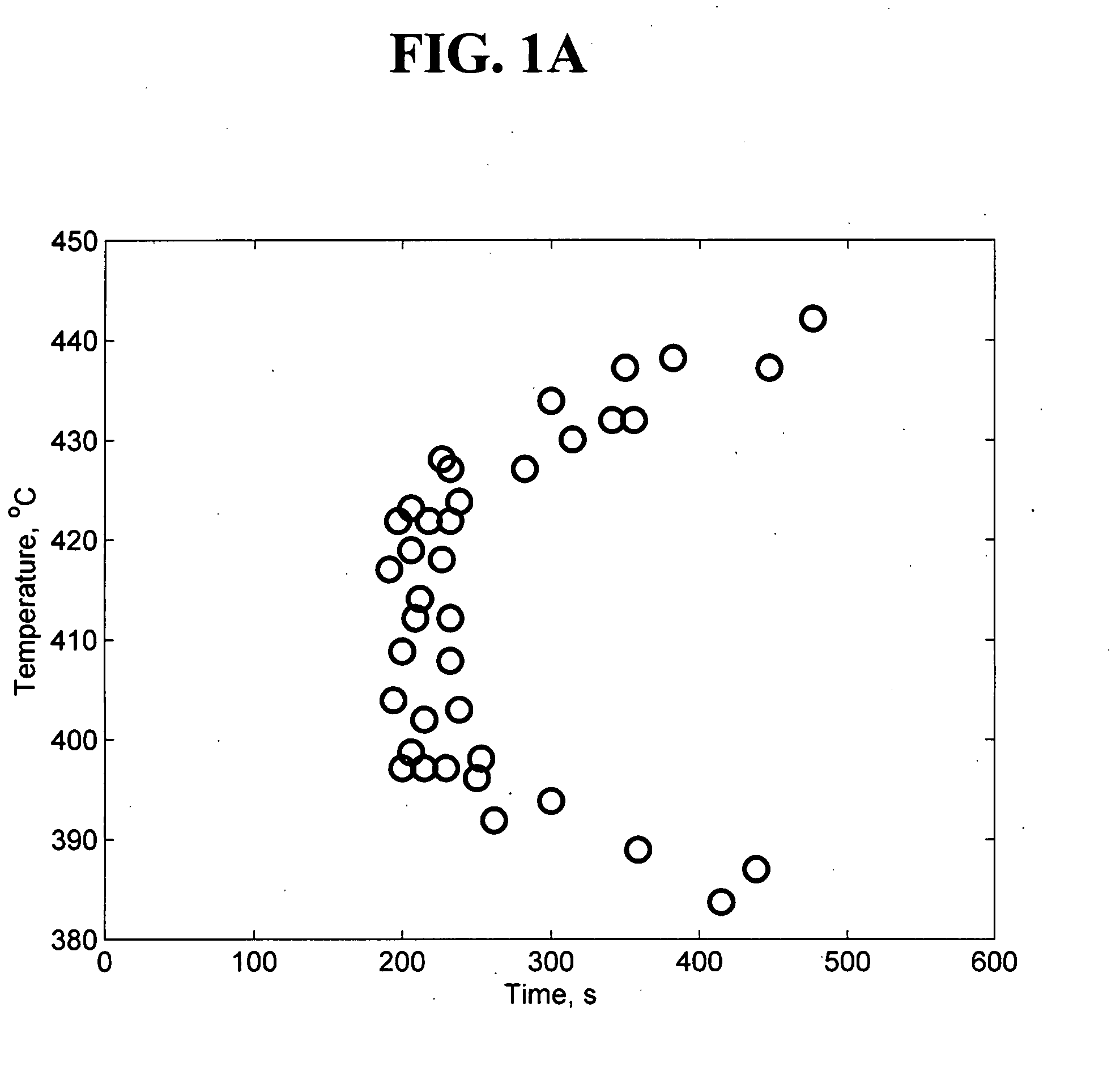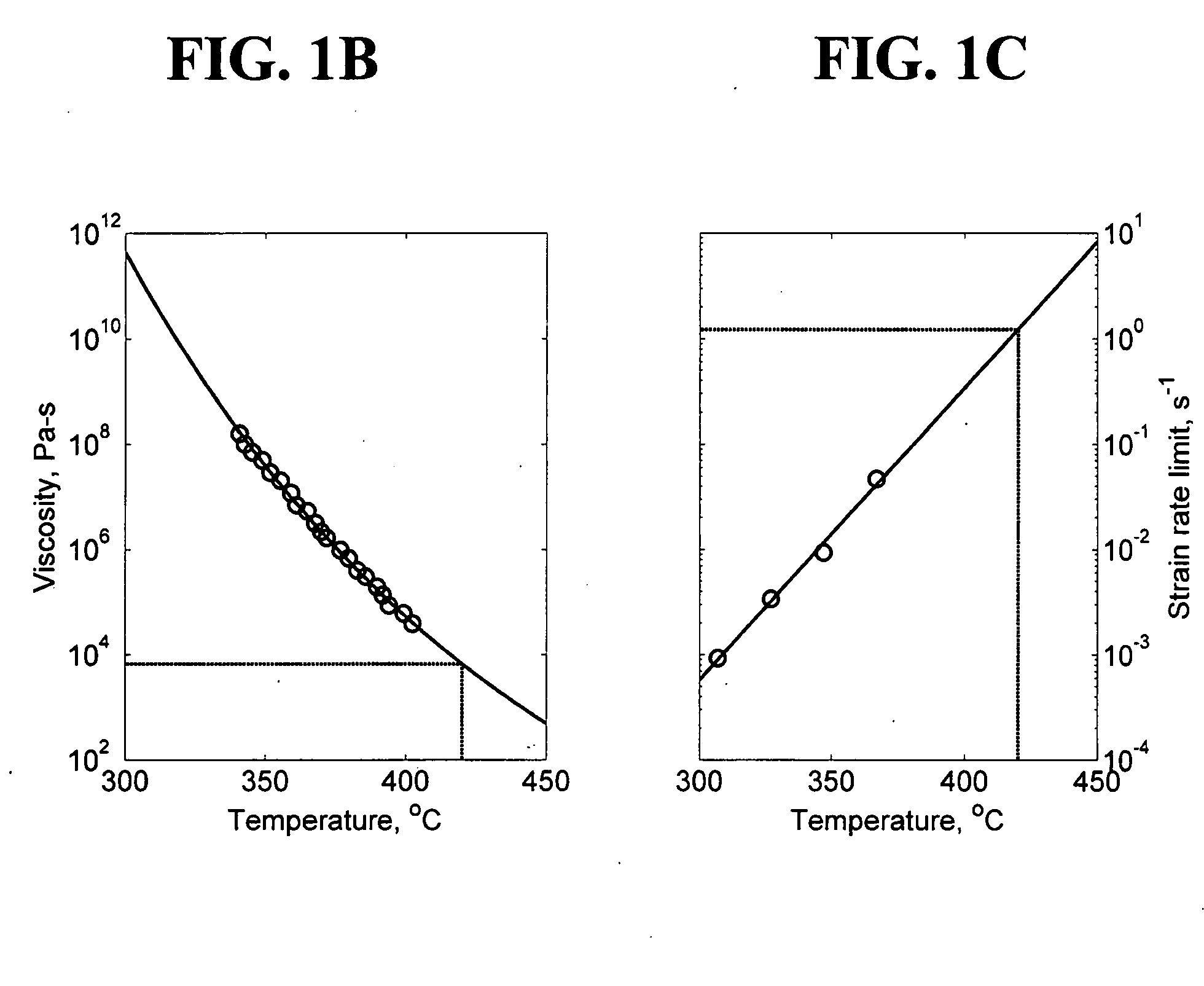Amorphous metal foam as a property-matched bone scaffold substitute
a technology amorphous metal foam, which is applied in the field of amorphous metal foam, can solve the problems of poor replication ability of bone load bearing capacity, low stiffness, and still considered inadequate scaffolds, and achieve the effect of reducing moduli and high strength
- Summary
- Abstract
- Description
- Claims
- Application Information
AI Technical Summary
Benefits of technology
Problems solved by technology
Method used
Image
Examples
example 1
[0042] A Pd43Ni10Cu27P20 alloy ingot together with H3BO3 powder was enclosed in a quartz tube under 1-bar pressure of argon, and heated to 900° C. for approximately 3-5 minutes to facilitate gas release and entrainment in the liquid. The tube containing the mixture was then immersed in molten tin at 420° C., and allowed to stand for approximately 30-60 seconds to attain thermal equilibration. Then, pressure was reduced to below 0.01 mbar. Finally, the mixture was rapidly quenched in water.
[0043]FIG. 2 is a photograph of the AMF produced according to Example 1. The AMF had a density of 1.16 g / cc (88% porosity). FIG. 2 also depicts a pore-free button of equivalent mass, which is shown to demonstrate the nearly 10-fold increase in volume produced by foaming. FIG. 3 is an x-ray diffractogram verifying the amorphous nature of the AMF produced according to Example 1. FIG. 4 depicts two other foams prepared according to Example 1, but having densities of 0.93 g / cc (90% porosity). As shown...
experimental example 1
[0051] AMFs were prepared having densities ranging from 0.76 to 1.66 g / cc. Compressive testing of each AMF was performed. Cylindrical specimens with polished and parallel loading surfaces having diameters of 18 mm and heights ranging between 25 and 30 mm were prepared for mechanical testing. A servo-hydraulic Materials Testing System with a 50-kN load cell was utilized for the loading tests. Strain rates of 1×10−4 s−1 were applied. Strains were measured using a linear variable displacement transducer (LVDT). The compressive loading responses of the 1.66 g / cc (83% porosity) and 0.76 g / cc (92% porosity) AMFs are shown in FIG. 9. The loading stiffness is taken to be the slope of the linear loading response prior to failure, while the strength is taken to be the peak stress at failure.
[0052]FIG. 10 depicts a plot of density-dependent stiffness against that of bone. In FIG. 10, exemplary inventive AMFs having density-dependent stiffnesses ranging from E=640ρ3.75 to about E=2900ρ0.78 (wh...
PUM
| Property | Measurement | Unit |
|---|---|---|
| density | aaaaa | aaaaa |
| density | aaaaa | aaaaa |
| porosity | aaaaa | aaaaa |
Abstract
Description
Claims
Application Information
 Login to View More
Login to View More - R&D
- Intellectual Property
- Life Sciences
- Materials
- Tech Scout
- Unparalleled Data Quality
- Higher Quality Content
- 60% Fewer Hallucinations
Browse by: Latest US Patents, China's latest patents, Technical Efficacy Thesaurus, Application Domain, Technology Topic, Popular Technical Reports.
© 2025 PatSnap. All rights reserved.Legal|Privacy policy|Modern Slavery Act Transparency Statement|Sitemap|About US| Contact US: help@patsnap.com



